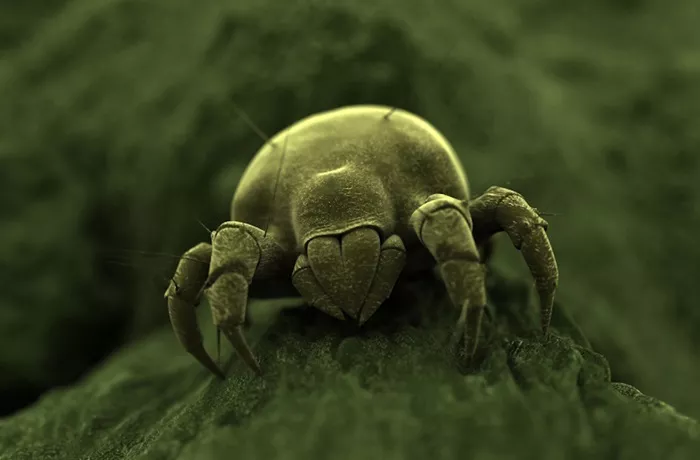House dust mites are microscopic creatures that thrive in household environments, particularly in areas where dust accumulates. These tiny arachnids are invisible to the naked eye, but their presence can significantly impact human health, especially for those with allergies or asthma. Understanding what causes house dust mites to proliferate is essential for effective management and control. This article delves into the various factors that contribute to the prevalence of house dust mites, exploring their biology, environmental conditions, and the measures that can be taken to mitigate their impact.
1. The Biology of House Dust Mites
To understand what causes house dust mites, it is crucial first to comprehend their biology and life cycle. House dust mites belong to the family Pyroglyphidae and are primarily composed of two species: Dermatophagoides pteronyssinus and Dermatophagoides farinae. These mites are typically around 0.2 to 0.3 millimeters in size, making them invisible to the naked eye. They have a life cycle of approximately one month, during which they go through several stages: egg, larva, nymph, and adult.
House dust mites feed primarily on organic matter found in household dust, particularly skin flakes shed by humans and pets. They also consume other organic debris, such as fungi, bacteria, and pollen. The mites produce allergens through their feces and body fragments, which become airborne and can trigger allergic reactions when inhaled by sensitive individuals.
2. Environmental Conditions Favoring House Dust Mites
Several environmental factors contribute to the proliferation of house dust mites in indoor settings. Understanding these conditions can help in creating environments that are less conducive to mite infestations.
Temperature and Humidity
House dust mites thrive in warm and humid conditions. The optimal temperature range for their growth is between 20°C to 25°C (68°F to 77°F), with humidity levels above 50%. High humidity provides the moisture that mites need to survive and reproduce. In dry conditions, mites desiccate and die. Therefore, maintaining lower indoor humidity levels can significantly reduce mite populations.
Household Dust
Household dust is a critical factor in the proliferation of dust mites. Dust accumulates in various areas of the home, including carpets, bedding, upholstered furniture, and curtains. Since dust mites feed on the organic matter within dust, any environment that allows for the accumulation of dust can become a breeding ground for these mites.
Soft Furnishings and Fabrics
Soft furnishings, such as mattresses, pillows, carpets, and upholstered furniture, provide ideal habitats for dust mites. These materials trap dust and offer a warm, humid environment close to human skin cells, which mites feed on. Regular cleaning and the use of allergen-resistant covers can help reduce mite populations in these areas.
3. Human and Animal Activity
Human and animal activity significantly influences the presence of house dust mites. Understanding these behaviors can help in mitigating mite infestations.
Skin Shedding
Humans and pets continuously shed skin cells, which accumulate in household dust and provide a primary food source for dust mites. An average person sheds about 0.5 to 1 gram of skin cells daily, enough to feed a large population of dust mites. Regular cleaning, including vacuuming and dusting, can help reduce the buildup of skin cells in the home.
Pets
Pets contribute to the proliferation of dust mites by shedding fur and skin flakes, which become part of household dust. Additionally, pet dander and saliva contain proteins that can further exacerbate allergies in sensitive individuals. Regular grooming and bathing of pets, along with keeping pet areas clean, can help manage dust mite populations.
Household Habits
Certain household habits and routines can either contribute to or mitigate the presence of dust mites. For example, using high-efficiency particulate air (HEPA) filters in vacuum cleaners and air purifiers can help capture dust and allergens more effectively. Regular washing of bedding in hot water and maintaining a clean living environment are essential practices for controlling dust mites.
4. Building and Home Design
The design and construction of a home can also impact the prevalence of house dust mites. Factors such as ventilation, insulation, and flooring materials play a role in creating environments that either support or deter mite populations.
Ventilation
Proper ventilation is crucial in controlling indoor humidity levels. Homes with poor ventilation tend to have higher humidity, creating ideal conditions for dust mites. Ensuring adequate airflow and using dehumidifiers in areas prone to moisture, such as bathrooms and basements, can help reduce humidity and limit mite growth.
Insulation
While good insulation is important for energy efficiency, it can also contribute to higher indoor humidity if not managed properly. Insulated homes that are well-sealed may retain moisture, especially in climates with high outdoor humidity. Balancing insulation with proper ventilation is key to preventing environments that favor dust mite proliferation.
Flooring Materials
Carpeted floors are notorious for harboring dust mites, as they trap dust and provide a warm, humid environment. Switching to hard flooring materials, such as wood, tile, or laminate, can make it easier to clean and reduce dust mite habitats. If carpets are preferred, regular vacuuming with a HEPA filter and steam cleaning can help manage dust mite populations.
5. Preventive Measures and Control Strategies
Given the various factors that contribute to the presence of house dust mites, implementing preventive measures and control strategies is essential for minimizing their impact on indoor environments.
Reducing Humidity
One of the most effective ways to control dust mites is by maintaining indoor humidity levels below 50%. Using dehumidifiers, air conditioners, and ensuring proper ventilation can help achieve this. Additionally, avoiding excessive use of humidifiers and promptly fixing any water leaks or sources of moisture can prevent high humidity levels.
Cleaning and Maintenance
Regular cleaning is crucial for managing dust mite populations. Vacuuming carpets, rugs, and upholstery with a HEPA-filtered vacuum cleaner can help remove dust and mites. Dusting surfaces with damp cloths or microfiber cloths can capture dust more effectively than dry dusting. Washing bedding, curtains, and other fabrics in hot water (at least 130°F or 54°C) can kill dust mites and remove allergens.
Allergen-Proof Covers
Using allergen-proof covers on mattresses, pillows, and box springs can create a barrier between dust mites and humans. These covers are designed to be impermeable to mites and their allergens, reducing exposure and making it easier to manage mite populations.
Minimizing Clutter
Cluttered environments can trap dust and provide numerous hiding spots for dust mites. Keeping living spaces tidy and minimizing the number of dust-collecting items, such as stuffed animals, books, and decorative items, can help reduce dust mite habitats.
Professional Cleaning and Pest Control
In cases of severe dust mite infestations, professional cleaning and pest control services may be necessary. These services can provide thorough cleaning and treatment of areas that are difficult to manage with regular household cleaning practices.
Conclusion
House dust mites are a common and often overlooked source of indoor allergens. Understanding the causes of house dust mites involves recognizing the environmental conditions, human and animal activities, and household habits that contribute to their proliferation. By addressing factors such as temperature, humidity, dust accumulation, and cleaning practices, individuals can create less hospitable environments for dust mites and reduce their impact on health and well-being.
Effective management of house dust mites requires a multifaceted approach that includes regular cleaning, maintaining proper indoor humidity levels, using allergen-proof covers, and minimizing clutter. With these strategies in place, it is possible to significantly reduce dust mite populations and alleviate the allergic reactions and respiratory issues associated with their presence. By staying informed and proactive, homeowners can create healthier, more comfortable living spaces free from the hidden threats posed by house dust mites.
[inline_related_posts title=”You Might Be Interested In” title_align=”left” style=”list” number=”6″ align=”none” ids=”9720,9498,9717″ by=”categories” orderby=”rand” order=”DESC” hide_thumb=”no” thumb_right=”no” views=”no” date=”yes” grid_columns=”2″ post_type=”” tax=””]
































